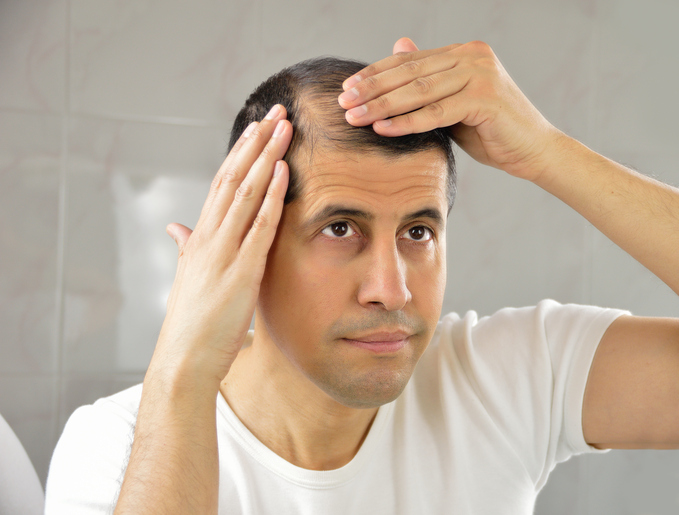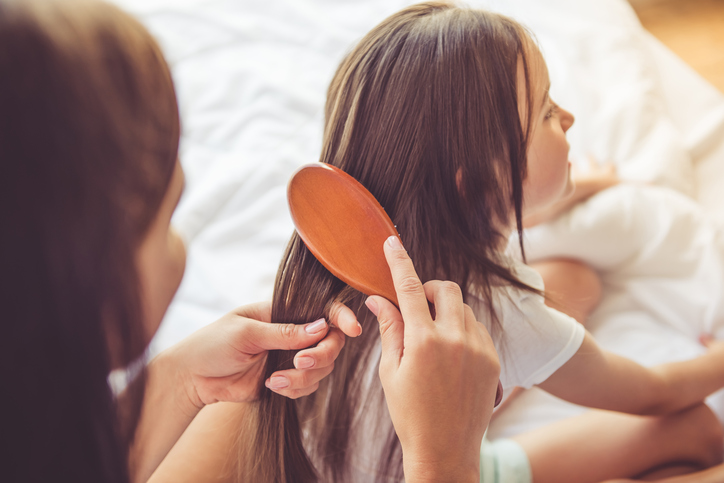 Trichotillomania, also called compulsive hair pulling, is a very treatable condition. It is typically addressed through behavioral therapy. The right therapist can help a person quit the hair-pulling behavior and address any underlying emotional concerns.
Trichotillomania, also called compulsive hair pulling, is a very treatable condition. It is typically addressed through behavioral therapy. The right therapist can help a person quit the hair-pulling behavior and address any underlying emotional concerns.
TREATMENT AND THERAPY FOR TRICHOTILLOMANIA
The primary psychotherapy treatment for trichotillomania is habit reversal training (HRT). HRT is a type of cognitive behavioral therapy. It was developed in the 1970s for treating repetitive behaviors such as skin picking, hair pulling, nail biting, or tics. HRT treats hair pulling as a conditioned response to specific events and situations. Its goal is to help an individual unlearn this response.
HRT has three major components: awareness training, competing response training, and social support.
In awareness training, a person learns to recognize what factors trigger their hair pulling episodes. Most therapists will have individuals record the circumstances in which they pull hair. The record may include places, times of day, emotional states, and so on. By looking at these records, the therapist and individual can find patterns of behavior. For example, a person examining their journal may realize they always pull their hair while they watch TV.
Next comes competing response training. When a person encounters a known trigger, they do a “competing response” such as clenching their fists. This competing behavior physically prevents the person from pulling at their hair. An individual will practice this competing response any time they have the urge to pull hair.
The last component is social support. An individual may recruit loved ones to assist with their competing response training. Family or friends may remind the person to do the competing response during trigger situations. They may also offer encouragement when the person successfully resists the urge to pull hair.
Other psychotherapy options can be used to complement HRT. These include:
- Acceptance and Commitment Therapy (ACT): This approach helps individuals learn to tolerate the urges to pull hair; observing these compulsions without acting against them.
- Dialectical Behavior Therapy: This approach can improve mindfulness and emotion regulation.
- Group Therapy: This approach is helpful for people who feel ashamed or alone in their experience. It can provide social support and emotional comfort.
Medication is generally not effective in treating trichotillomania. If a person has co-occurring anxiety or depression, a doctor may prescribe an antidepressant. However, the FDA has not approved any medication to treat hair pulling specifically.
SELF-HELP FOR TRICHOTILLOMANIA
Outside of therapy, individuals may need immediate strategies to stop pulling their hair. One of the most effective things a person can do is to minimize triggers. For example, someone who pulls hair in response to tingling skin can put on a topical anesthetic. If a person knows they always pull hair while looking in their bedroom mirror, they could turn said mirror toward the wall.
Individuals who pull their hair unconsciously may wish to recruit the help of loved ones. A friend or family member can keep an eye on the person during triggering situations and alert them when they begin pulling their hair. They can also provide necessary encouragement.
Another strategy is to set up road blocks to make hair pulling inconvenient. For example, someone who plucks their eyelashes can store their tweezers in a locked box. Undoing the lock takes time, allowing a person a bigger window in which to overcome their urge. In general, the more times a person can resist the compulsion to pull hair, the easier denying the urge becomes.
HELPING CHILDREN WHO PULL THEIR HAIR
 Trichotillomania typically begins between ages 9 to 13, though it can start before or after this period. When treating youth, clinicians emphasize the importance of using positive reinforcement. Praise tends to work much better than scolding or shaming. In general, it is more effective to reward alternative behaviors than to punish the hair pulling itself.
Trichotillomania typically begins between ages 9 to 13, though it can start before or after this period. When treating youth, clinicians emphasize the importance of using positive reinforcement. Praise tends to work much better than scolding or shaming. In general, it is more effective to reward alternative behaviors than to punish the hair pulling itself.
Young children (ages 11 and below) will likely need adult guidance during treatment. A parent may need to monitor the child’s behavior and remind them to use their competing response training. As children grow older, they may wish to take a more control over the treatment process. By late adolescence, parental contact with the therapist is often minimal.
It is common for parents to be more motivated for treatment than the children are. A firm reward system can motivate younger children to participate in therapy. Most adolescents desire privacy in treatment, so a reward system may not be as effective.
Parents often need lots of support in navigating their role in treatment. A child’s recovery from trichotillomania might take longer than they expect. If the parents’ impatience or confusion are causing conflict in the home, family therapy may be appropriate.
CASE EXAMPLE OF TRICHOTILLOMANIA THERAPY
- Anxiety and Hair Pulling: Roberta, 23, experienced severe anxiety throughout most her adolescence. She developed a habit of playing with her long hair when feeling anxious and stressed. Over time, she began to pull some of her hair out. The development of this habit was very slow, and she was unaware that she was losing most of her longer hair. When her mother pointed out a balding spot toward the back of her head, Roberta was afraid that she had a dangerous physiological disease. Her doctor helped her realize she was experiencing a form of trichotillomania. Roberta was referred to a therapist by her doctor. Her therapist taught her how to cope with anxiety through breathing exercises. Roberta also learned how to recognize the conditions that trigger hair pulling. Roberta still struggles with the urge to pull her hair from time to time, but she is better equipped to cope with the emotions that cause the compulsion.
References:
- Golomb, R., Franklin, M., Grant, J. E., Keuthen, N. J., Mansueto, C. S., Mouton-Odum, S., . . . Woods, D. (2016). Expert consensus treatment guidelines: Body-focused repetitive behaviors [PDF]. Retrieved from http://www.bfrb.org/storage/documents/Expert_Consensus_Treatment_Guidelines_2016w.pdf
- Kaplan, A. (2012, May 14). Psychiatric Times. Retrieved from http://www.psychiatrictimes.com/apa2012/update-trichotillomania#sthash.wg1adAyh.dpuf
- Stein, D. J., Grant, J. E., Franklin, M. E., Keuthen, N., Lochner, C., Singer, H. S., and Woods, D. W. (2010). Trichotillomania (hair pulling disorder), skin picking disorder, and stereotypic movement disorder: Toward DSM-V. Depression and Anxiety, 27(1), 611–626. Retrieved from http://www.dsm5.org/Research/Documents/Stein_Trich.pdf
- Trichotillomania. (n.d.). National Health Service. Retrieved from http://www.nhs.uk/Conditions/trichotillomania/Pages/causes.aspx
- Trichotillomania (TTM). (n.d.). OCD-UK. Retrieved from http://www.ocduk.org/trichotillomania

